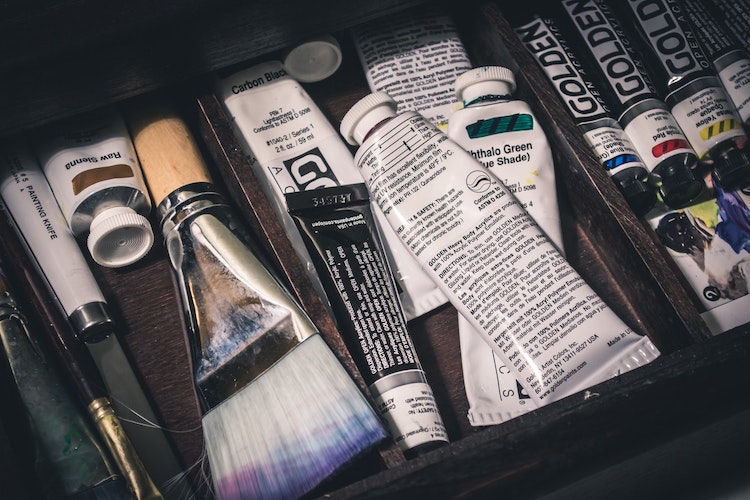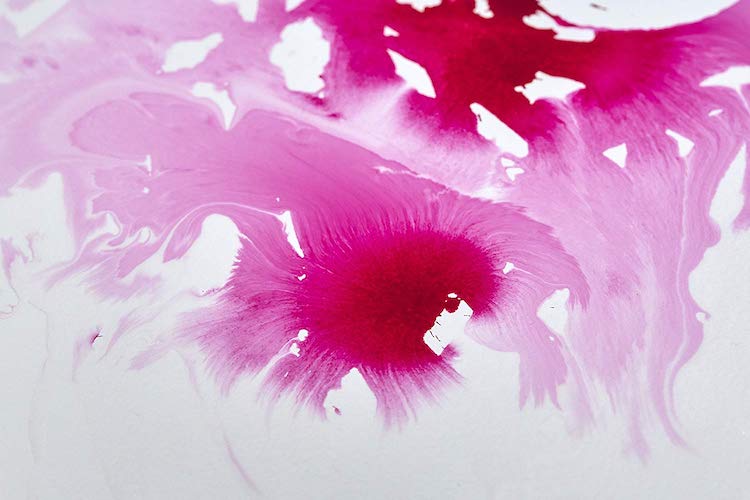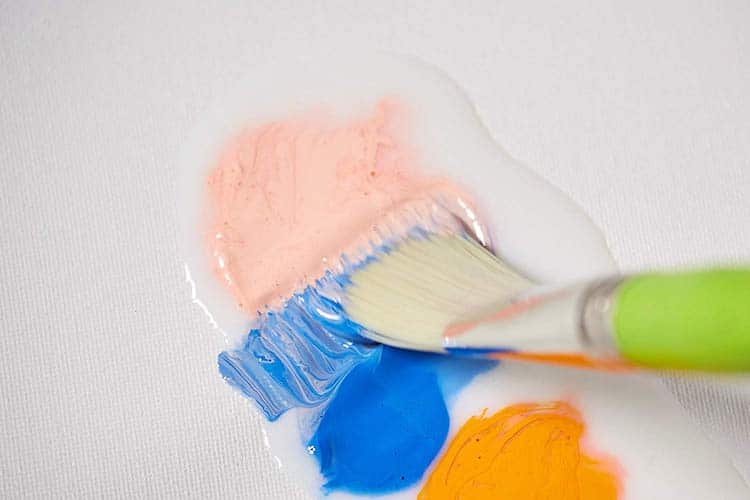
Photo: Steve Johnson
This post may contain affiliate links. If you make a purchase, My Modern Met may earn an affiliate commission. Please read our disclosure for more info.
Acrylic paint is popular because of how easy it is to use. With just a couple of your favorite colors, a paintbrush, canvas, and water, you can start creating beautiful works of art. Unlike oils, there are no long drying times or special tools needed to clean your brushes. This makes acrylics perfect for traditional painting, but they also lend themselves to adorning objects and mixing media.
Acrylics are versatile, but they come with some drawbacks. One is that they dry quickly. This might not be a dealbreaker for everyone, but there are plenty of painters that probably wish their pigment wouldn’t set so fast. Another shortcoming is that the pigment can look flat once it dries. Unlike oil paints that have a lustrous sheen (thanks to the fact they are made with oil), acrylics have a polymer binder that just doesn’t have the same visual dazzle.
Luckily, acrylic paints have a not-so-secret weapon to give them special qualities. They are called acrylic mediums, and when coupled with your favorite acrylic paintings techniques, they can add another dimension to your art.
What is an acrylic medium?
A medium is a substance that is added to paint to change one or more of its properties. In acrylic mediums, these mixtures can be incorporated into the pigment to lengthen its drying time, make it thicker, or change the texture. Mediums are bought in addition to paints.
Types of Acrylic Mediums
There are several types of acrylic mediums available, and here are four of the most popular ones you’ll find. Paint brands like Liquitex and Golden develop new mediums from time to time, so be on the lookout for their new offerings.
Gel medium
If you employ the glazing approach in your painting, you’re already using a lot of water to thin the pigment. In doing this, the paint’s properties are diluted which can cause uneven coverage. Try swapping water for gel medium; it will thin the pigment while keeping a buttery consistency. It is available in varying levels of finish: matte, gloss, or semi-gloss, which will each give the paint an extra luster (or keep its finish subtle).
Gel medium comes in two different consistencies: liquid and heavy body.
Liquid increases fluidity and transparency. This means that when you apply paint to your canvas, you won’t see the brush strokes; it’s perfect for creating thin, even layers that are required for glazing.
Heavy body focuses on paint consistency. It will make the paint thicker and brushstrokes visible.
Try these highly rated gel mediums: Liquitex Gloss Gel Medium, Liquitex Matte Fluid Medium, and Liquitex Gloss Heavy Gel Medium
Texture medium
As the name implies, a texture medium changes the composition of the paint in a dramatic way. Sand gel, beads gel, pumice, and glass are just some of the possibilities. They can be mixed in with the paint and spread over the canvas.
Of the texture mediums, modeling gel (or model paste) is the most commonly used. It’s a heavy white gel that’s great for building 3D textures. To use it, first apply it to your surface using a paintbrush or palette knife. Wait for it to dry and then paint it using like you would a conventional acrylic painting.
Try these highly rated texture mediums: Liquitex Flexible Modeling Paste, Liquitex Resin Sand, Liquitex Glass Beads, and Liquitex Blended Fibers

Photo: Liquitex
Flow medium
Flow medium changes the consistency of your acrylic pigment while making it easier to adhere to canvas. If you’re looking to try acrylic staining or pouring, flow medium will make it easier to achieve that aesthetic.
Try this highly rated flow medium: Liquitex Professional Flow Aid Effects and Liquitex Pouring Medium

Photo: Liquitex
Slow-drying medium
Do you wish that your acrylic paint wouldn’t dry so fast? Slow-drying medium is your answer. It doubles the drying time so that you can try some oil-painting techniques—like blending colors on canvas.
Try these highly rated slow-drying mediums: Winsor & Newton Artists’ Acrylic Slow Drying Medium and Liquitex Professional Slow-Dri Blending Fluid Medium
Related Articles:
What Is the Difference Between Acrylic vs Oil Paint?
11 Different Types of Painting That Every Artist Should Know
Learn How to Paint a Colorful Sunset in Easy to Follow Steps
